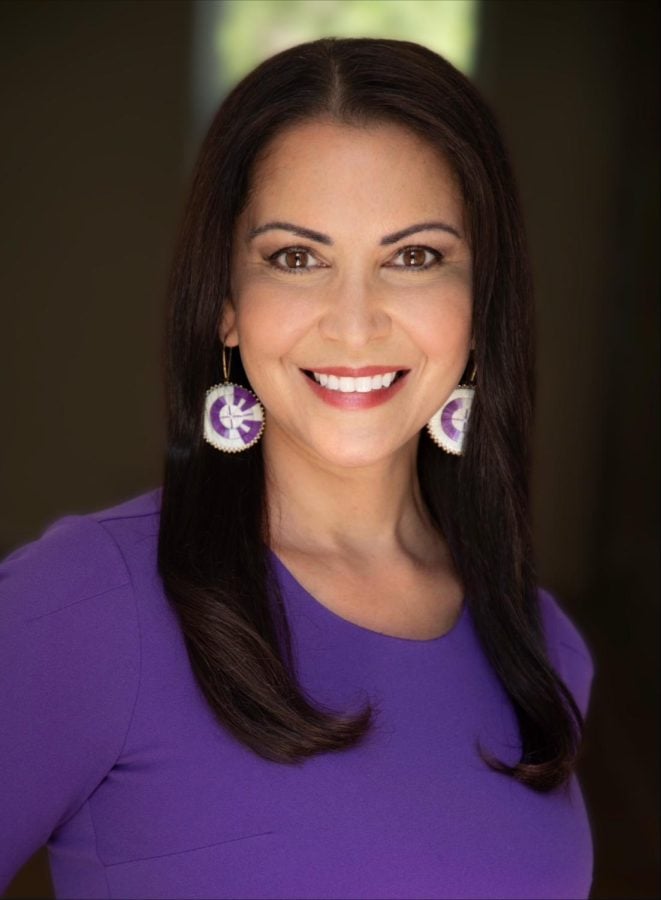Q&A: New Mitchell Museum Executive Director talks Native education
Kim Vigue. She was announced as the new executive director of the Mitchell Museum on Oct. 20.
October 28, 2021
The Mitchell Museum of the American Indian announced last Wednesday Kim Vigue will be its new executive director. An enrolled member of the Oneida Nation and descendant of the Menominee Tribe from Wisconsin, Vigue has worked to further Native health and education through the U.S. Department of the Interior’s Bureau of Indian Education and other public and private organizations for nearly two decades.
The Daily talked with Vigue about her new role and the importance of creating a space for Native education and voices in Evanston. This interview has been edited for clarity and brevity.
The Daily: Why did you want to be executive director of the Mitchell Museum?
Vigue: I had been doing some work for them through my consulting agency, Wolf River Consulting Group, and fell in love with the staff and the focus of their work. I was completely drawn to them because of their mission and commitment to allow Native people to lead the way and share from our own lived experience. That’s the focus of my whole career — Native people have this voice and are able to share their own perspectives.
The Daily: What do you envision as you think about the museum’s future?
Vigue: It’s really important to me that Native people have a voice, but also that we educate non-Native people about the issues we face and where we could use strong allies. You have such a greater understanding and a greater willingness to support a cause, or movement if everybody feels included and everybody feels educated in the same way.
So, there’s a whole range of social injustice issues. We talked about the boarding school era and its impact on the subsequent generations of Native people in my first week there. There are a few other issues that we’re addressing in the short-term, like environmental rights and Indigenous Peoples’ Day and the miseducation of American children. I’m hoping to give the people who are on the ground doing that work a platform to share with everybody.
The Daily: For you, what is the importance of a place like the Mitchell Museum that’s dedicated to Native history, voices and culture?
Vigue: Where do I start? It means so many things to me. Native people have dealt with and still deal with this issue of invisibility. People don’t even know we exist anymore. Everything that’s been taught about us has been taught in the past tense. And that affects everything from how we’re talked about in an educational setting, in health care, regarding the environment — I mean, it impacts every part of our lives. Personally, I want to make sure visitors have this true, authentic Native American experience that’s provided by Native people.
I think about what a responsibility this feels for me to be in this role, because every Native person I know has sat in a classroom and heard educators misrepresent us. This is a real opportunity to introduce the people in Evanston and the greater Chicago area to the history of the Native people that originally inhabited this area. And then to teach them there is this thriving, very large Indigenous community within the area — that we’re still here.
Email: [email protected]
Twitter: @luciabarnum_
Related Stories:
— Poets examine dual cultures in Mitchell Museum storytelling event
— Mitchell Museum of the American Indian recognizes three Native American activists
— Media educator Ernest M. Whiteman III speaks about Native American media representation


